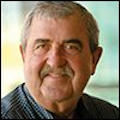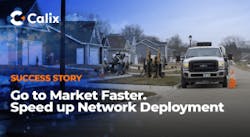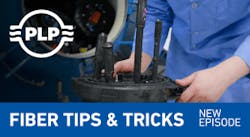Field technicians are constantly involved with, and are responsible for, unwanted noise on customer circuits, whether the circuit is copper, fiber, wireless, or any combination of the above. If the root cause is beyond the field technician’s ability to solve it, the field technician should be able to turn to network engineering for support. If network engineering cannot help, they should be able to turn to the Inductive Coordination and Electrical Protection Engineer (ICEP) to assist them and the field technician with expert technical advice and assistance.
Most RBOCS have ICEP engineers. (Telcos, especially the smaller companies, who do not have an ICEP engineer, can hire a consulting ICEP engineer.) The ICEP engineer must be skilled in inductive coordination, especially noise testing and noise mitigation, because very few field technicians have the test equipment or the knowledge to fix inductive interference. That being said, a large amount of testing and fault locating should first be completed by the field technician before calling in the ICEP engineer.
InvisiLight® Solution for Deploying Fiber
April 2, 2022Go to Market Faster. Speed up Network Deployment
April 2, 2022Episode 10: Fiber Optic Closure Specs Explained…
April 1, 2022Food for Thought from Our 2022 ICT Visionaries
April 1, 2022First Steps for the Field Tech
The field technician usually resolves the majority of wireline noise by fixing the cable pair in a copper infrastructure or a combination copper fiber circuit. Any shorted cable pair, grounded cable pair, crossed battery, or series resistance on the cable pair is identified, located, and repaired. Most of these metallic faults are terminating faults in aerial terminals or in buried pedestals. If the fault is proved to a buried section, then splices with water ingress or sheath damage are located and repaired. If the root cause is water in a section either aerial or buried, then the faulted section of cable is turned over to Engineering for replacement.
If the root cause is unacceptable noise mitigation, then the field technician must determine if the root cause of the noise is a pair problem, a bonding and grounding issue, an associated distribution power company issue, or a combination of the above issues.
Identifying a noise mitigation problem is a very convoluted process for the time-sensitive field technician. To do this, the field technician can then test the cable pair for circuit (metallic) noise and power influence with a multi-function test set. These tests are measured to the quiet line termination in the central office (CO) or remote. If there is no quiet line termination, then the field technician can place a 0-ohm grounded short at the CO or remote, and measure from the network interface device (NID) or the end-user terminal.
Circuit noise and power influence are interrelated. Circuit noise should measure less than 20dBrnC, and power influence should measure less than 80dBrnC. With that information, the longitudinal balance is calculated. To make that calculation, subtract circuit noise from power influence. If the longitudinal balance is greater than 60dB, then there is nothing wrong with the cable pair. If power influence is greater than 80dB and circuit noise is greater than 20dB, then there is a noise mitigation problem. For example, if power influence measures 90dbrnC and circuit noise measures 30dB and the longitudinal balance is 60dB, then there is nothing wrong with the cable pair — it is a noise mitigation problem.
Steps for ICEP
It’s time to bring in the ICEP engineer, but before you do go to each pedestal or terminal on the route and make sure that they are bonded and grounded, and that the shield is attached to the distribution power company neutral a minimum of 4 times a mile.
If the issue is a power company issue, which most noise mitigation issues are, the ICEP engineer works with distribution power utilities and customers to solve the problems, including work within the high voltage power distribution network.
Noise associated with distributed power can be caused by a number of issues, including a faulted capacitor bank, reclosures, undersized neutrals, and faulted transformers, to name a few. If the ICEP engineer is convinced that the telco infrastructure is interacting with distribution power, then they will recommend the installation of an induction neutral transformer (INT). When properly placed, this solves most noise mitigation problems. The INT protects cables and equipment from lightning, and lowers the noise floor, which results in higher bandwidth for the IoT.
As you can see, a quality ICEP engineer is a valuable asset for noise mitigation. Most ICEP engineers are also responsible for countless other problems, such as corrosion, electrical protection, high voltage protection, lightning protection, electrostatic discharge protection, and grounding for copper, fiber, and wireless facilities.
Like this Article?
Subscribe to ISE magazine and start receiving your FREE monthly copy today!
Signing off
Are you getting support from an ICEP? Telcos who do not have an ICEP engineer can hire a consulting ICEP engineer — and there are very good ones out there, including my friend, and fellow ISE author, Russ Gundrum, from [email protected]. Who in your company has most helped you with troublesome cases? Do you have a team environment, or is it everyone for him/her self? I’d love to hear from you. Contact me at [email protected] or 831.818.3930.
About the Author





